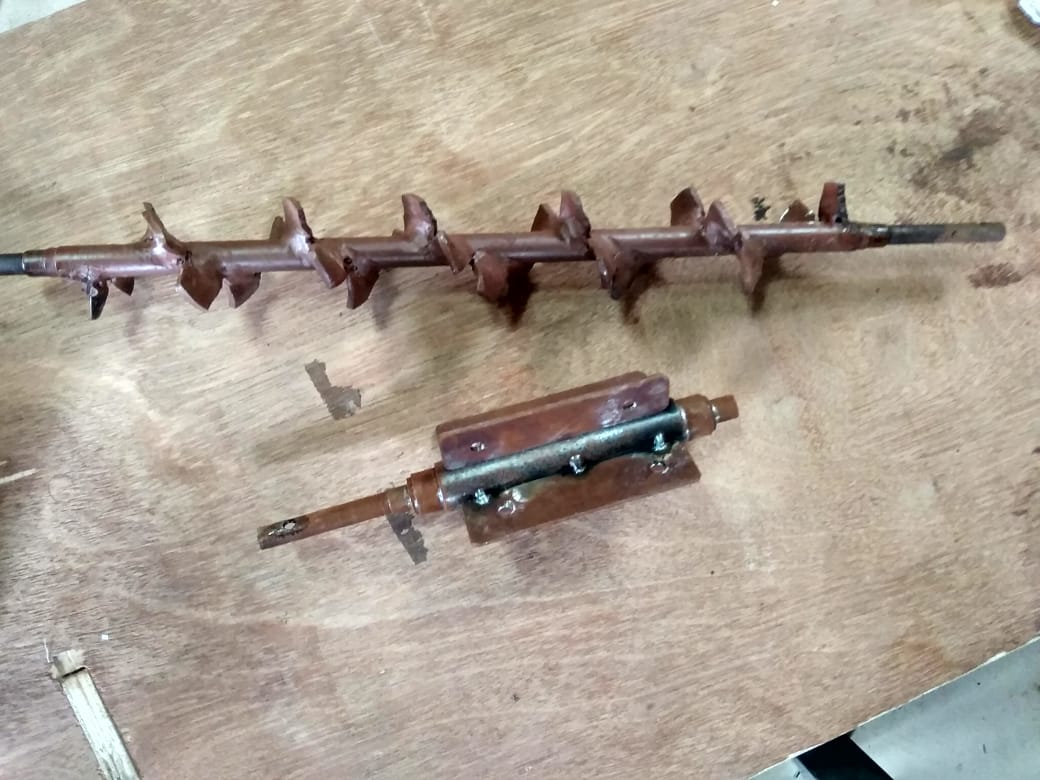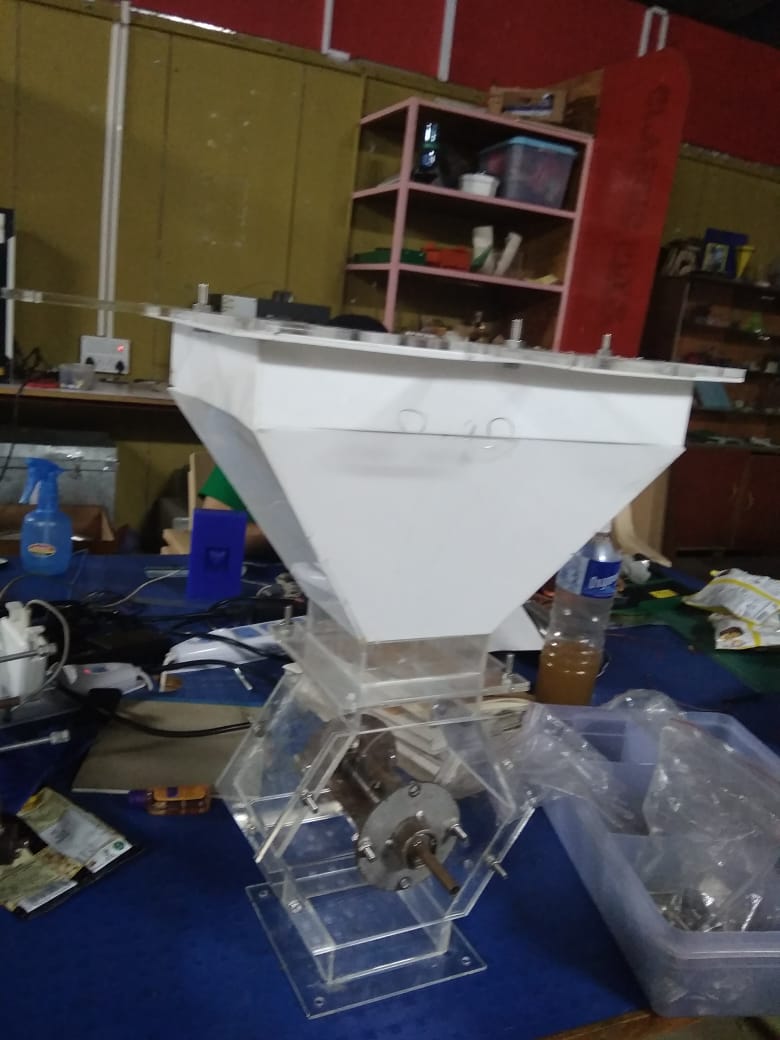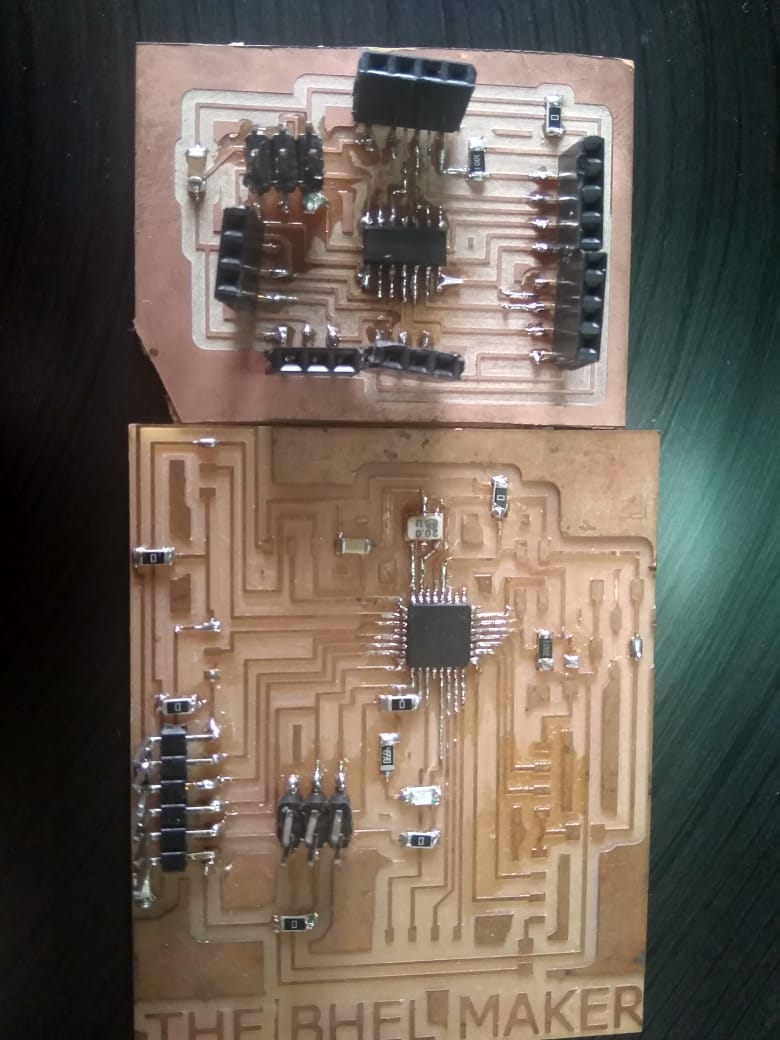Aim:
To define the applications of the Final Project.
Task 1:
To make a quick runthrough the project
The project is about a machine that automates the manufacturing process of a very delicious India Street food, "Bhel".
The principle and working of machine is explained in the Concept note, of the project.
In short the machine is designed to solve the basic hygine problems faced while enjoying street food.
Rest here wriiten are the answers to some basic questions that should be asked before making a machine..
What does the "Bhel Maker" do??
The bhel maker is an integrated automated machine that prepares the indian dish bhel, with extreme hygine, reducing the involvement of human hands that could be responsible for concerns regarding hygine.
It consists of hoppers containing the raw ingredients, along with the spices, and on a push of a button you get the ready to eat Bhel..
Has it been done before??
The machine is born out of a very old concept on which the research has been going on since 1992, across the universities in India, but in the course of fab probably would be the first to work along with.
Also this was chose by me for cost optimisation and defining new prototyping methods for the same.
What will be the contribution in design?
While choosing the project I actually had a few designs about how thw auto batch system works and how could the bhel be mixed in a normal mixer, the only thing I had to design was the integrated system of the mechanical components, about how would they come together to function as one unit, along with the electronic peripherals, and it's methods of programing to make the machine work on a push of a button.
Materials and costing
The major and the most crucial part in my entire process was to optimise the cost of the materials and manufacturing.
The only one limitation that I had for material selection, which had to be put forward before any design parameter was, the material to be food grade.
Hence I has choose materials such as PVC pipes, acrylic sheets, Galvanised MS components, etc.
Following here mentiond is the image of the BOM that guides well through the components and their respective costs..
What would be the sources of the materials??
Most of the materials I am using are out of the consumables in the lab, materials such as acrylic, and MDF, rest the standard PVC pipes, bearings have to be purchased from the market.
Where are the metalic components, few have been manufactured in a fabrication company of my known, out of which most of the material was found as industrial scrap.
For the mechanical components I needed only following sources, and regarding the electronic components such as IC's, relays, motors and solenoids I had to purchase them from the market directly.
What would be the systems defining the project??
The project has been divided into few systems for the convinience of manufacturing.
Those being:-
The mechanical systems including the one of the input system where the raw material has to be fed in specific quantities, working on the principle of auto batch systems.
The other system in the mechanical sectors turns out to be the mixer system, where there are ports for the liquid spices to mix into the solids poured from the top hoppers.
One more to add was the shutter at the bottom of the machine, this is an actuator mechanism.
The electronics were devided in similar ways as the splitup of mechanical systems.
Considering the above this machine had pretty basic systems that would define the machine.
What would be the processes used in project??
There are few manufacturing process that would be used in the project, those being listed as follows:-
- Turning:-
This is a process of using lathe machines to machine circular components, for instance all the feeder screws and shafts have been manufactured through turning a block of material into desired shapes.


- 3D printing:-
Here I have used the additive manufacturing method to generate the rack and pinion of the customised height that I needed, which could have invetment cost in the material for laser cutters.

- Laser cutting:-
This process was used to make most of the parts which were made out in acrylic, this was done on the SIL laser that we had, it was a pretty easy method of prototyping.
After the entire cutting and assembly I had following parts for the machine.

- Milling:-
This operation was used to develop all the versions of the my boards for the machine.
More than that were no components needed to be milled.

What are the questions to be answered??
Before we set the machine to applications, the machine has to answer a few questions those being:-
- Are all the materials it consists, food grade?
- Is the system robust enough to withstand the rough usage in the local market?
- Is the machine cheap enough to be purchased by a street vendor?
- And finally is the machine able to deliver that consistant taste of food, for which it is made for?
How would the machine be evaluated?
The only firm criteria for the evaluation of the machine is, if it delivers a consistant taste, and that including a proper hygine.
Other parameters that come into play are, the efficiency and cost effectiveness.
Conclusion
To conclude the machine is basically just an intergration of systems which function together, and are designed to serve hygenic food, by avoiding interferance of human hands.
The prototype is an attempt to optimise the price of the machine to make easily affordable, and to re-examine other processes of manufacturing to come to a conclusion of an optimistic solution.